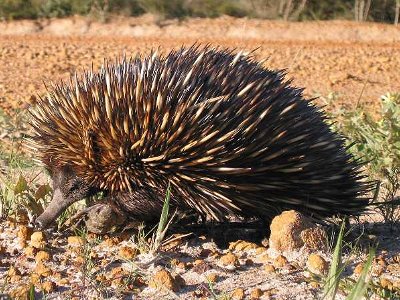6. The Cardiff Giant was an archaeological hoax that took place in which country?
From Quiz Pick n' Mix: Part NINE
Answer:
United States
The Cardiff Giant was "discovered" in 1869 in Cardiff, New York. A 10 foot (3 m) figure, it was reported to be a "petrified man" although it was not. The Cardiff Giant was concocted by cigar maker and get-rich-quick enthusiast, George Hull. Hull was an atheist and found himself in an argument during a business trip to Iowa with some Christians about the Bible, and whether giants had ever walked the Earth. Hull was inspired by this argument, and decided to create a fake giant himself in order to prove how easy it would be to fool people.
Hull made the "giant" out of a five-ton block of gypsum he had ordered, sent it to a stone cutter who agreed to keep the secret and buried it in a pit. Workmen were hired to dig the pit in Cardiff, New York, with rumours spread by Hull about a "petrified man" and news began to spread with people coming from far to see the so called discovery. They wedged the hoax under roots to give the illusion that it had been buried for hundreds of years. Hull rubbed the giant with acid to make it look ancient, weathered and vintage in colour, and even slammed pins into the gypsum's surface to give the illusion of human skin pores. He spent almost $3,000 on his creation.
The hoax got so out of hand that P. T. Barnum offered $50,000 for what he thought was a genuine giant. The hoax did not fool everyone however, with several geologists at the time proclaiming that the giant was a statue, with notable Yale geologist, Othniel Charles Marsh, declaring it "of very recent origin, and a most decided humbug." By 1870 the giant was subject to mockery, and correct accusations of fakery. Hull had made over $20,000 from his fakery by this time however, and tried to cash in on his new found way of money making, burying a fake 7-foot-tall giant with a tail in Colorado. He died in 1902, and was reportedly still proud of tricking the world albeit briefly. The "giant" is now an exhibit in the Farmers' Museum in Cooperstown, New York.
 Quick Question
Quick Question This quiz has a question loosely based on each of the twenty categories in FunTrivia, all of which have something to do with rejects or rejection.
This quiz has a question loosely based on each of the twenty categories in FunTrivia, all of which have something to do with rejects or rejection.  My third 'Category Crunch' quiz, with a question for every FunTrivia category, only this time with pictures!
My third 'Category Crunch' quiz, with a question for every FunTrivia category, only this time with pictures!  = Top 5% Rated Quiz,
= Top 5% Rated Quiz,
 Top 10% Rated Quiz,
Top 10% Rated Quiz,
 Top 20% Rated Quiz,
Top 20% Rated Quiz,
 A Well Rated Quiz
A Well Rated Quiz